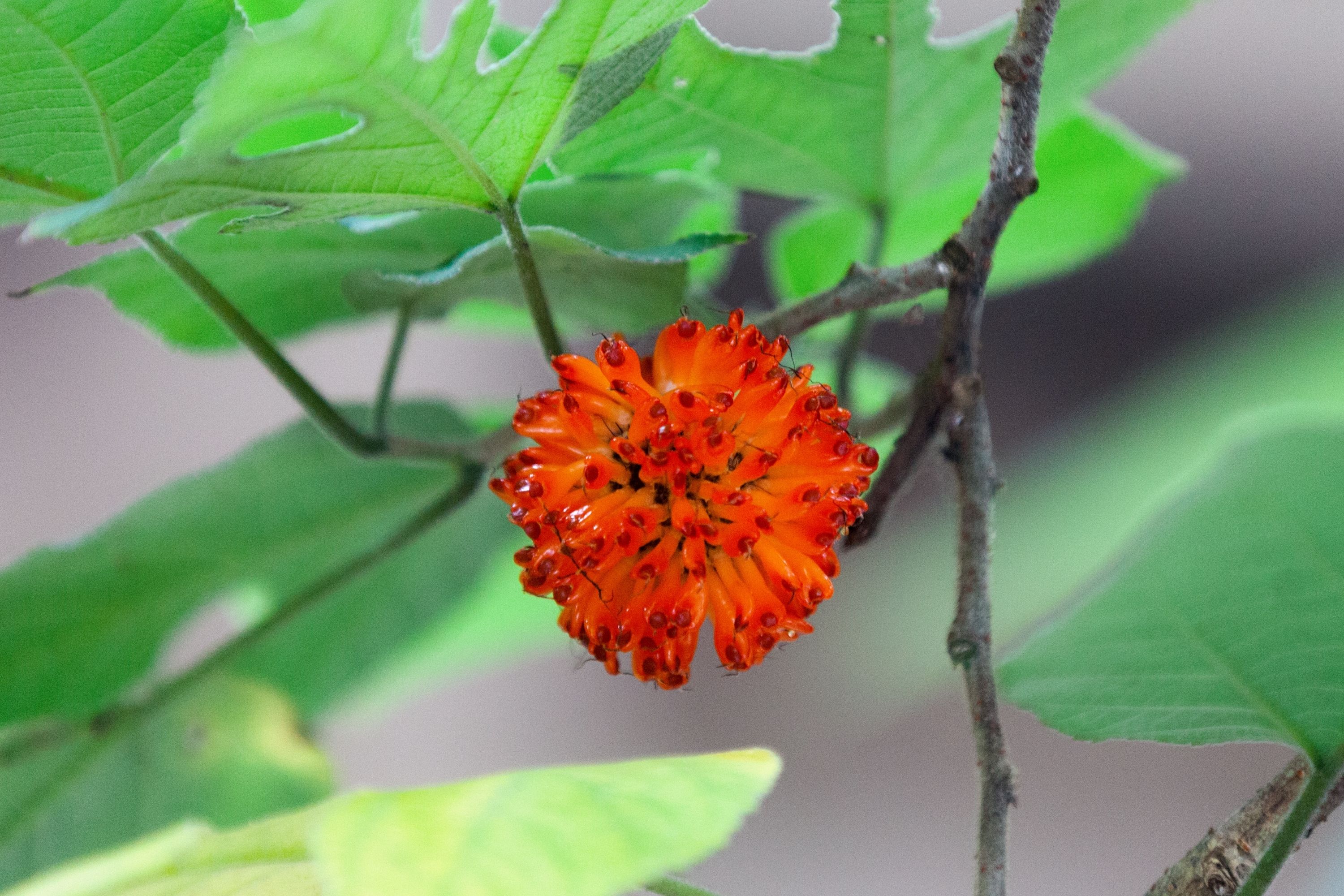Paper mulberry
(Broussonetia papyrifera)

Description
Broussonetia papyrifera, commonly known as the paper mulberry, is a fast-growing deciduous tree species belonging to the Moraceae family. It is native to China, Japan, and Korea but has now become naturalized in many parts of the world, including North America, Europe, and Southeast Asia. This tree species is widely cultivated for its high-quality fiber, which is used to make paper, cloth, and other textiles. In this article, we will discuss the various aspects of the Broussonetia papyrifera plant, including its physical characteristics, growth requirements, ecological significance, cultural and economic importance, and potential uses. Physical Characteristics: Broussonetia papyrifera is a small to medium-sized deciduous tree that can grow up to 15-20 meters in height. The tree has a wide-spreading, open crown, and the bark is grayish-brown, smooth, and exfoliates in small flakes. The leaves are alternate, simple, and ovate to lanceolate in shape, with serrated edges and pointed tips. The leaves are dark green in color and have a rough, sandpaper-like texture on the upper surface. The plant is dioecious, which means that the male and female flowers grow on separate trees. The male flowers are small, yellowish-green, and cylindrical, while the female flowers are greenish-white and occur in small clusters. Growth Requirements: Broussonetia papyrifera grows well in a wide range of soil types, including sandy, loamy, and clay soils. It prefers moist, well-drained soils that are rich in organic matter. The tree is tolerant of a wide range of pH levels, from acidic to alkaline. It can grow in full sun or partial shade and is well-suited to hot and humid climates. The plant is hardy and can tolerate temperatures as low as -15°C. Ecological Significance: Broussonetia papyrifera has a significant ecological role as a pioneer species in disturbed areas. The tree can grow in soils that have been degraded or contaminated, and it can help to stabilize the soil and prevent erosion. The plant is also known to attract a wide variety of pollinators, including bees, butterflies, and other insects, which play an essential role in maintaining biodiversity. The leaves of the tree are a food source for many species of herbivorous insects and caterpillars, which, in turn, provide food for birds and other predators. The tree also serves as a habitat for many bird species, which nest in its branches. Cultural and Economic Importance: Broussonetia papyrifera has a rich cultural and economic history, particularly in East Asia, where it has been cultivated for thousands of years. The plant has been used to make paper, cloth, and other textiles, and its fibers are known for their strength, durability, and softness. The tree has significant cultural importance in China, where it is regarded as a symbol of longevity, and its wood is used to make traditional Chinese furniture and musical instruments. In Japan, the plant is used to make traditional washi paper, which is used for calligraphy, printing, and art. In Korea, the tree is used to make paper and cloth, and the leaves are used as a food source for silkworms. Potential Uses: Broussonetia papyrifera has many potential uses, particularly in the areas of fiber production, environmental remediation, and horticulture. The plant's fibers are suitable for making high-quality paper, textiles, and other products, and they have been used for thousands of years in East Asia.
Taxonomic tree:







